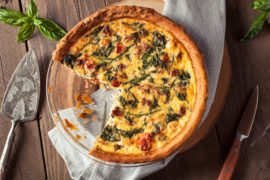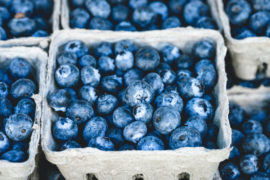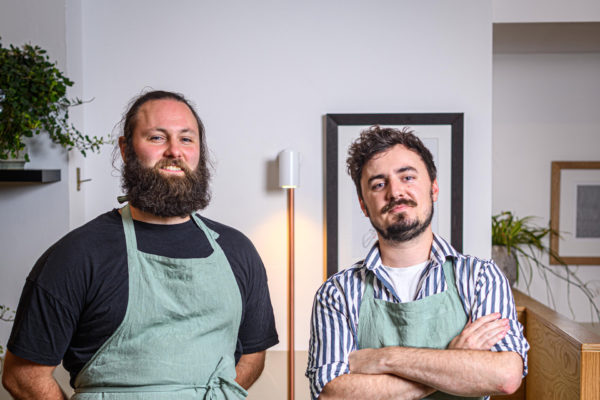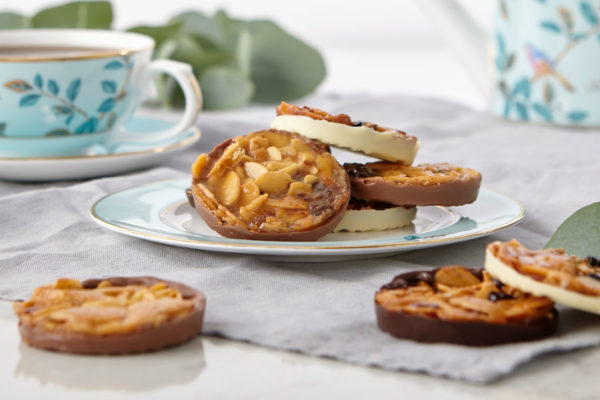Recipe: Ben Mervis’ Sherry Trifle + Q&A
By
1 year ago
Dive into a traditional trifle
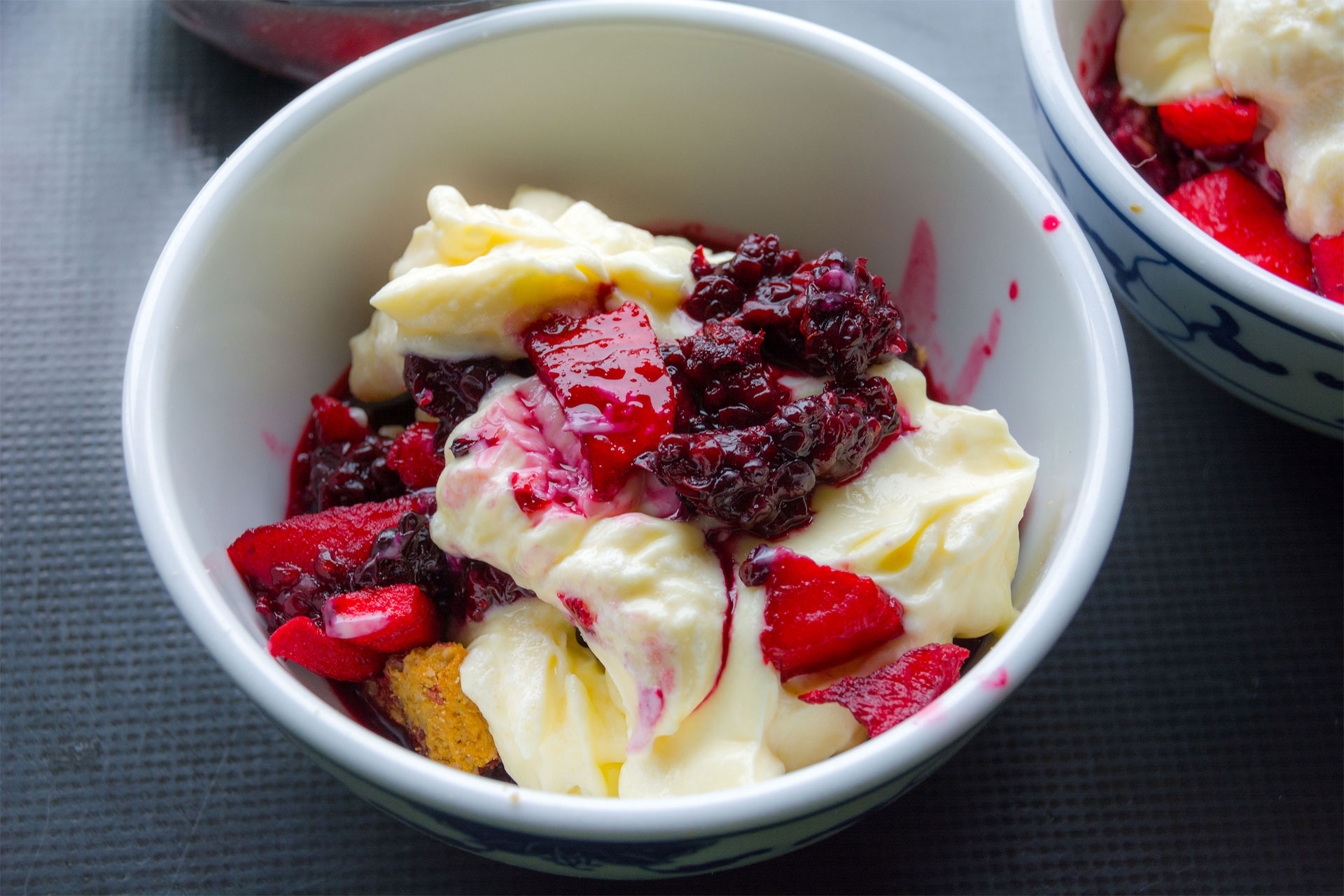
Meet Ben Mervis, writer and food historian – who never follows a recipe.
Recipe: Sherry Trifle
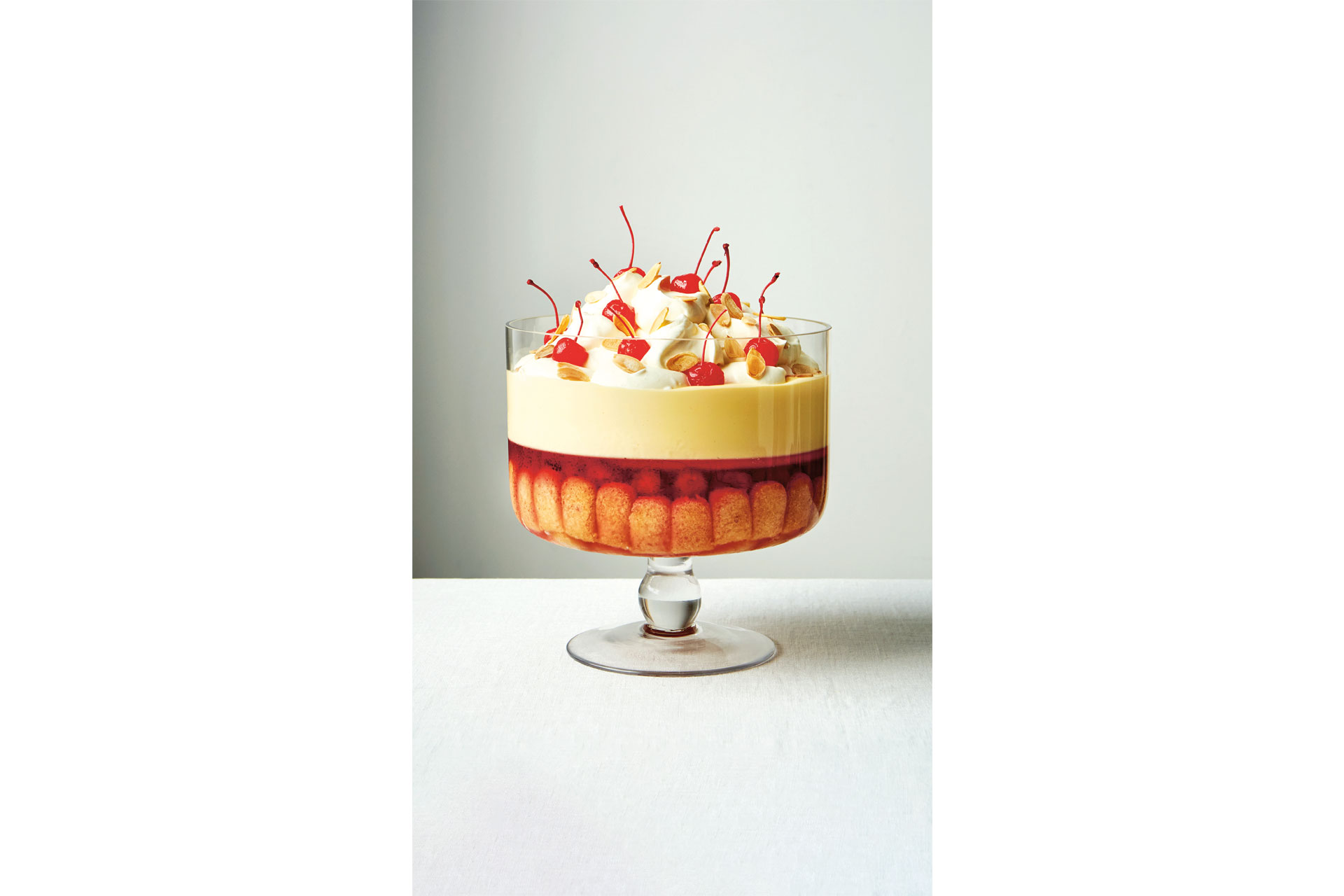
A delicately assembled, layered dessert featuring sherry- soaked sponge, custard, jam and jelly (flavoured gelatine) and cream, the trifle is the centrepiece of summertime celebrations and Yuletide tables alike. While it’s easy for the trifle to look pretty inside a serving bowl, it’s important to ensure that each layer maintains its shape, so that you get a little of each in every bite. Such is the depth of admiration for and significance of the trifle that noted food writers Helen Saberi and Alan Davidson co-wrote a small volume called Trifle, published in 2001, solely on the topic.
Ingredients
SERVES 6
For the jelly:
- 11⁄2 leaves gelatine
- 250 g/9 oz fresh raspberries
- 50 g/2 oz (1⁄4 cup) caster (superfine) sugar
To build:
- 16 sponge (lady) fingers
- 100 ml/31⁄2 fl oz (1⁄ 3 cup plus 1 tablespoon) dessert wine
- 100 ml/31⁄2 fl oz (1⁄ cup plus 1 tablespoon) 3 sherry or Madeira
- 120 g/4 oz (1⁄2 cup minus 4 teaspoons) raspberry jam – 250 g/9 oz fresh raspberries
- 600 ml/20 fl oz (21⁄2 cups) Custard (page 33) made with 1 teaspoon extra cornflour (cornstarch)
For the syllabub:
- 300 ml/10 fl oz (11⁄4 cups) double (heavy) cream
- 2 tablespoons icing (confectioners’) sugar
- 60 ml/2 fl oz (1⁄4 cup) sweet sherry or Madeira – juice of 1⁄2 lemon
To decorate:
- 50 g/2 oz (1⁄2 cup plus 2 teaspoons) flaked (slivered) almonds, toasted
- Cocktail cherries
Recipe Instructions
- For the jelly (flavoured gelatine), put the gelatine leaves into a small bowl, cover with very cold water
and leave to soak for 5–10 minutes until completely soft. Usually 1 gelatine leaf can set 250 ml/8 fl oz (1
cup) liquid, so check the packet instructions. - Meanwhile, put the raspberries, caster (superfine) sugar and 375 ml/133⁄4 fl oz (11⁄2 cups) water into a
heatproof bowl, cover the bowl with clingfilm (plastic wrap) and set over a large saucepan of gently
simmering water. Heat for 10–15 minutes to about 50–60°C/122–140°F to avoid stewing the raspberries.
Strain the liquid into a heatproof bowl, squeeze the gelatine to remove the excess water, then add the squeezed-out gelatine
leaves to the raspberry infusion and stir until the gelatine has dissolved. (If the infusion is cold, warm a
quarter of the mixture and gently mix the gelatine into that, then stir the warmed mixture into the
remaining raspberry infusion.) - To build the trifle, cut each of the sponge (lady) fingers into 3 pieces and put into the bottom of a 1
litre/34 fl oz glass bowl or 6 individual trifle or sundae dishes. Pour the wine and sherry over the fingers
and leave to soak for 5–10 minutes. Meanwhile, put the jam and a little water to loosen, if necessary, into
a small saucepan and heat over a low heat for 5 minutes until warm. Carefully spread the jam over the
sponge fingers, then sprinkle with the fresh raspberries. Pour in the cool liquid raspberry jelly, filling to
about a third of the glass, then cover and leave to set in the fridge for 1 hour. - Meanwhile, make the Custard following the recipe on page 33. Once the jelly has set, pour the Custard
over the layer of jelly, filling to another third of the glass. Set aside. - For the syllabub, whip the cream using electric beaters or in a stand mixer fitted with a whisk
attachment to almost soft peaks. Put the icing (confectioners’) sugar into a medium bowl, add the sherry
and lemon juice and stir until the sugar has dissolved. Pour the mixture into the cream and briefly whisk
until just combined. - Spread or pipe the syllabub over the top of the Custard, then chill in the fridge for 1 hour, or ideally overnight.
- Decorate with toasted flaked (slivered) almonds and cocktail cherries and serve.
Chef Q&A With Ben Mervis
Food philosophy?
Food is the best way of understanding people: both collectively, as in another culture, and individually. What someone makes is often personal to them, their upbringing, and their personality. And foreign food cultures are often the best place to begin unpacking how history, trade, religion and migration have shaped the way people cook and what they like to eat.
First dish you learnt to cook?
Growing up in a Jewish household, I think it was my mother’s noodle kugel recipe. It’s lightly spiced, with soft cheese, and set like a casserole. I think I’ve eaten it before for breakfast, lunch, dinner, and dessert.
Favourite in-season ingredient?
It doesn’t get as much love as it should, but kale of all kinds. It’s such a staple of my kitchen, and I love cooking with it. Also, historically kale has had so much importance where I live (Scotland), that gardens were named in their honour: kaleyards.
Most inspiring chef you’ve ever met?
I had the honour of closely with René Redzepi of the Danish restaurant Noma for two years, and that changed my whole understanding of the power of food.
Most memorable meal out?
Late this past spring, I was able to visit one of my favourite restaurants and destinations, Inver, with my girlfriend. Inver is on the side of a loch, and we had the dreamiest, most bountiful breakfast, as a light breeze carried through our cabin. Idyllic.
When you’re not writing about food, what are you doing?
Eating it! Ha. I love walks: in the city and the countryside. I travel quite often and I love just taking in the sights, daydreaming, and so on. It keeps me feeling fresh, excited, inspired.
Any unique cooking rituals?
I find it difficult to completely follow a recipe. I love putting a small twist on everything. It feels too boring to follow recipes precisely.
What’s in your fridge?
Far too much: tonight will be a fridge clearout-inspired pasta made with lots of vegetables, some crispy sage butter, and a bit of ricotta. Elsewhere in the fridge is some good ham, one last glass of wine, ricotta, and a number of hot sauces, including one my girlfriend and I picked up in Hungary recently.
Best sustainable food advice?
It’s nothing novel, but I try and think of my meals like that of a small kitchen: being creative about how I can use every part of each ingredient, what I can get in season from my local organic shop, and so on.
The British Cookbook is out now (Phaidon, £39.95)

